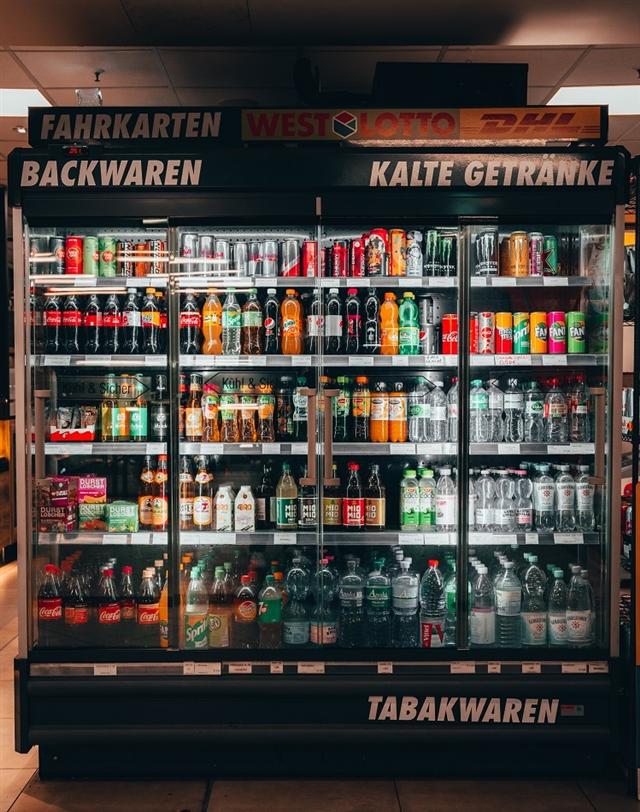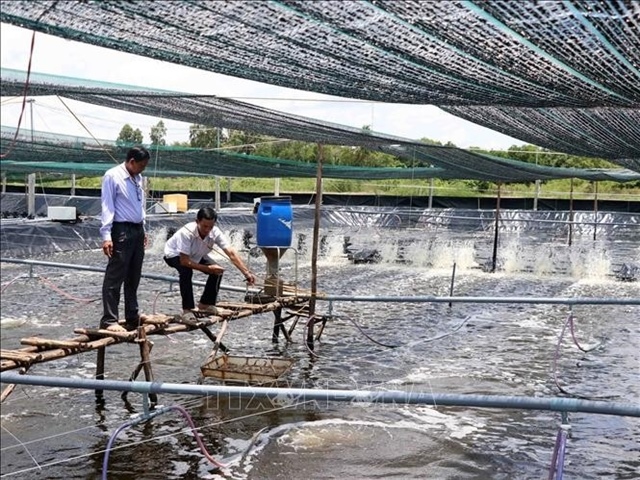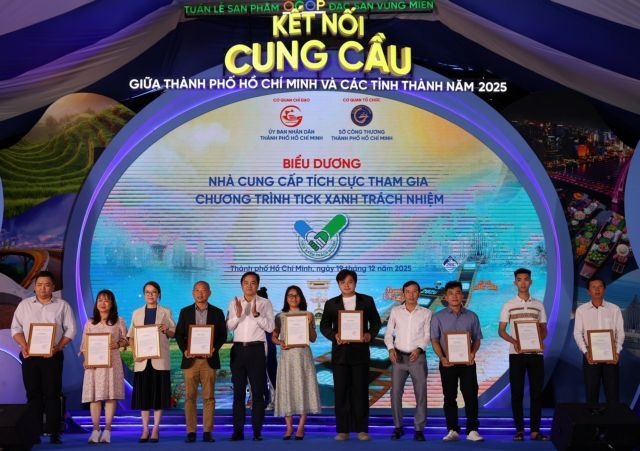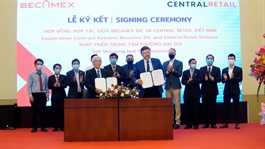Making use of technology roadmaps in order to serve longer-term FMCG goals
Making use of technology roadmaps in order to serve longer-term FMCG goals
Digital technology has already propelled the fast-moving consumer goods sector in Vietnam, as well as further afield, and reaped greater benefits for this market. Rahul Shinde, chief information officer at Coca-Cola Vietnam, dived into the advantages for the manufacturing process and customer engagement, and explains how to embed this tech culture into the industry in Vietnam.

Rahul Shinde, chief information officer at Coca-Cola Vietnam
|
Vietnam has become one of the fastest-growing markets in Southeast Asia, and retail sales in the country have increased over the past few years. Represented best through mom-and-pop shops, malls, and sales representatives until about a decade ago, the consumer goods industry in Vietnam today is as ubiquitous as mobile technology.
Furthermore, e-commerce in Vietnam is growing significantly, closely behind that of Singapore and Indonesia. Vietnam is considered the fastest-growing digital economy in the region and its dynamic e-commerce market is unlocking new business opportunities and receiving great attention from both domestic and international investors.
However, fast-moving consumer goods (FMCG) brands still have a relatively small market share in the overall international e-commerce ecosystem When it comes to groceries, we are still very much a nation of in-store shoppers; point-of-sale tactics combined with above-the-line mass awareness are shown to be effective.
Over the past 5-10 years, the FMCG sales environment has shifted significantly, resulting in a variety of barriers for brands to work around. Shelf space has been reduced with physical stores carrying fewer lines. Food provision retailers have moved to add non-foods and services to sustain growth. And the price has become king, with the rapid emergence and continued growth of discount producers.

FMCG brands that succeed in the future are those that are most likely to embrace technology and data to better understand their customers.
|
Our industry is sedulously harnessing the potential of technology to streamline the backend and emerge more competitive. For the transition to digital, a wider ecosystem that supports the change is needed.
In that context, there has never been a better time than now for this. The Vietnamese government has kickstarted several initiatives in recent times to move the country towards a digital economy by measures such as encouraging cashless payments and e-commerce, the latter of which is expected to hit a penetration of 70 per cent by 2025.
Hence, FMCG brands that succeed in the future are those that are most likely to embrace technology and data to better understand their customers, create more informed marketing campaigns, and operate in an omnichannel environment with both speed and agility.
Some of the key enablers in the process are the emerging technologies – big data, analytics, cloud computing, collaboration, mobile, robotics, and so on. Companies across sectors are experimenting with these technologies as they fast realise that these outline the future.
A case in point - Amazon and its new brand of Happy Belly snack products, and US startup Brandless, are both selling a range of FMCG at just $3 each. But unique insight afforded by big data helps these brands cut through the noise with the development of innovative products, improved targeting, and, ultimately, increased revenues for the companies in question.
Not just technology – a culture
Companies look at technologies that make it digitally savvy in its interactions with various stakeholders – consumers, customers, employees, and associates. Towards this, companies are taking a solution-based approach beyond products so that they can keep pace with consumer trends.
The only way a company can bring about a higher level of digital adoption is if the top management is clear on the objectives and processes involved. It becomes important to develop a company-specific framework and evaluate everything against that.
Only when the top management is completely on board and aligned with the initiatives can it be communicated down the line to the rest of the organisation. Chief information officers (CIOs) need to identify key stakeholders like customers and consumers, employees, and associates who help the company create value in the market for the consumer.
Companies also should look at multiple ways to connect seamlessly with the customer. They include customer engagement to listen, reach, and engage with consumers; a focus on digitalising traditional in-store execution processes, adopting e-commerce and online sales; innovation through digital business models; data analytics to drive its business decisions; and automation of business processes.
With the consumerisation of technology and penetration of it in every aspect of life for millennials and Gen-Z talents, deploying technology for talent acquisition is becoming mainstream. Tech enabled tools such as chatbot, internal social media and mobility are improving many companies’ attractiveness for new age employees.
Shift in processes
The COVID-19 pandemic has given e-commerce companies and online retailers the edge over traditional street retailers. And this has led to a shift towards online shopping, which shows no sign of waning. Experts are predicting a transportation crunch when demand begins to outstrip the availability of transport for online goods.
To support these processes, AI is now emerging as a powerful tool, capable of helping businesses to make the right decisions for their supply chains.
We are likely to see acceleration of automation initiatives to transform the way supply chains work. The automation of processes will help businesses to cut costs, improve efficiency, and eliminate any skills gaps by which they may be affected. Robotics, the Internet of Things, and AI are all a significant step forward in the world of digital supply chains. They are highly scalable, incredibly effective, and, importantly, hugely reliable.
While businesses are beginning to realise the potential of the data that is now available to them, consumers too are opening their eyes to the data that they share with the world. And this increased awareness has led to consumers being more concerned about the data they reveal, and how secure that data is once it has been shared around.
Data security, compliance, and content protection powered by edge security, homomorphic encryption, and newer privacy-enhancing tools are going to be paramount.

E-commerce industry in Vietnam is growing significantly, closely behind that of Singapore and Indonesia.
|
Four-step approach for digital strategy
What helps is to build technology roadmaps that are systematically implemented through an annual programme-based approach to serve both the company’s mid- and long-term goals.
At first, companies should develop a digital goal post. An initial cross-functional survey assessing both the awareness levels and the perceived data, analytics, reporting, and automation needs of principal supply chain stakeholders is a good way to start to create a digital ambition for the company.
The survey builds a base that can be used to define a set of realistic digital capabilities, implementation strategies, and applicable technologies that will yield specific, predictable benefits.
Next, companies should evaluate the current state. After developing a target picture, the CIO of any firm can start conducting deep-dive interviews with representatives from all core functions to establish a baseline of its current digital capabilities.
This process provides a good opportunity to create a list of ongoing and planned digital initiatives spanning the sales, commercial, manufacturing, sourcing, and delivery value chain.
For each digital element or capability, the organisation should involve cross functional teams; the supporting technology; and the impact it has in terms of costs, service, and working capital. This shared baseline of existing digital capabilities and limitations forms the basis for measuring, and ultimately closing, the gap between an organisation’s existing capability set and the digital target.
Enterprises also ought to assess technology options and create a shortlist. Too many companies view this part of the process as simply comparison-shopping among solutions based on relative performance and price.
Those are certainly valid considerations, but decisions should ultimately revolve around both identifying and prioritising desired digital capabilities in the context of immediate needs, long-term strategic goals, ongoing investments, upskilling required, and buy-in throughout the organisation.
It is particularly useful to benchmark how similarly situated organisations have addressed comparable challenges. The success stories of early adopters can also help from a buy-in standpoint by providing compelling arguments for completing their journeys.
A thorough value assessment, therefore, should include relevant digital use cases and best practices to benchmark potential benefits.
It is important to prioritise potential projects and create a digital roadmap. The organisation should take this shortlist of potential projects and technology and assess the project’s benefits versus how long it would take to implement.
Lastly, embracing digitalisation is not just about revamping one process or system to make it digital-friendly. It is a mindset change, much more than mere operational modifications. It involves understanding the consequences of digitisation in every cog in the wheel of business and its overarching effect on business models.

























